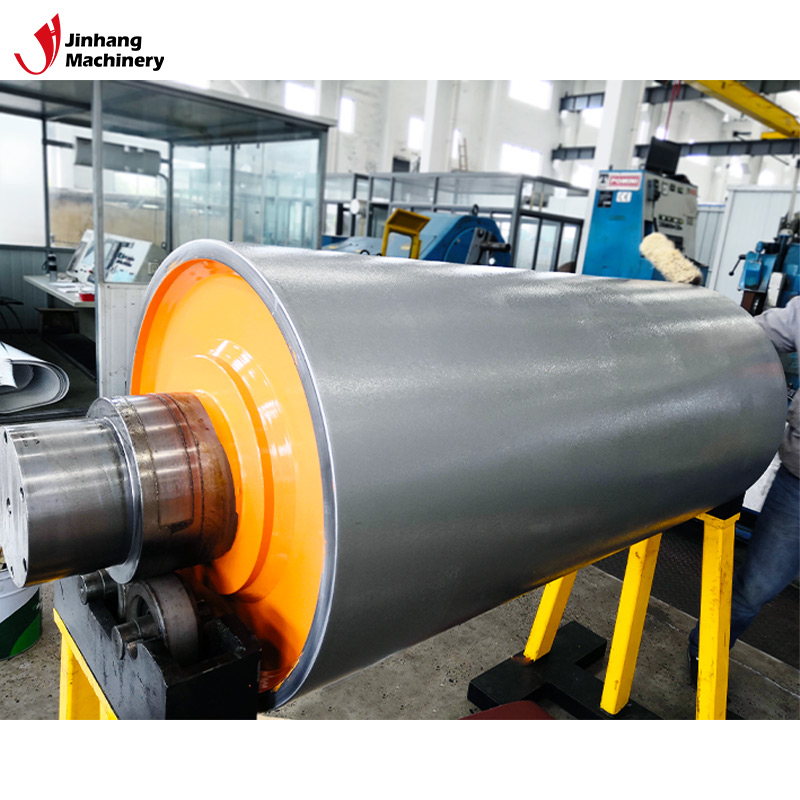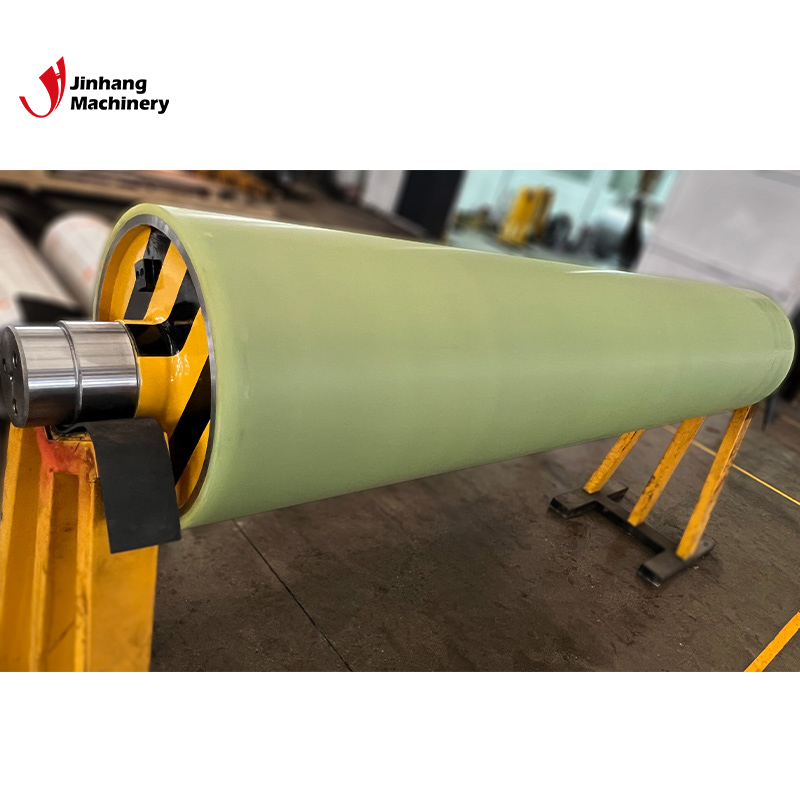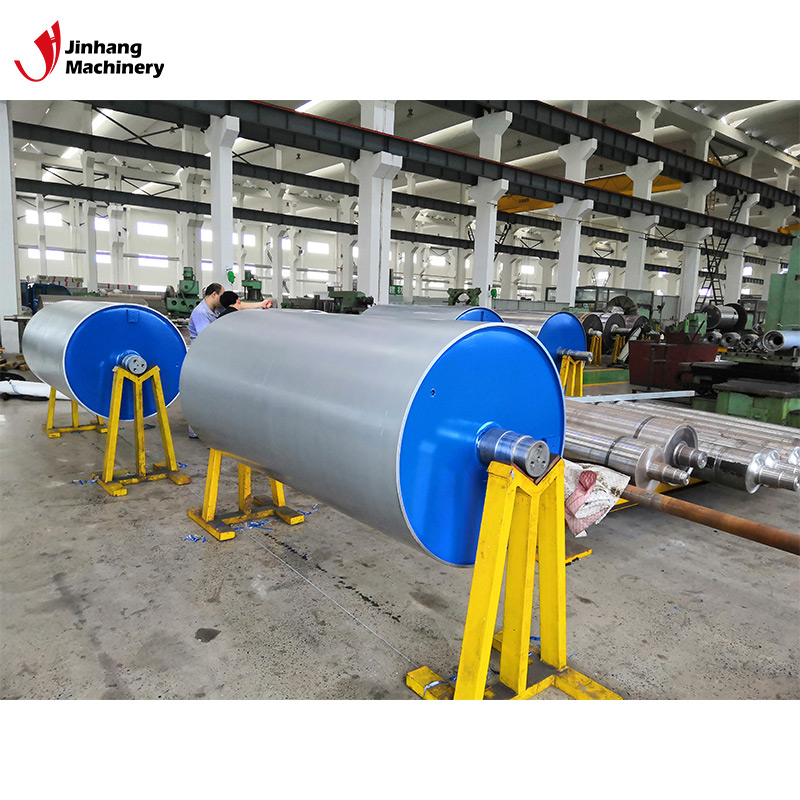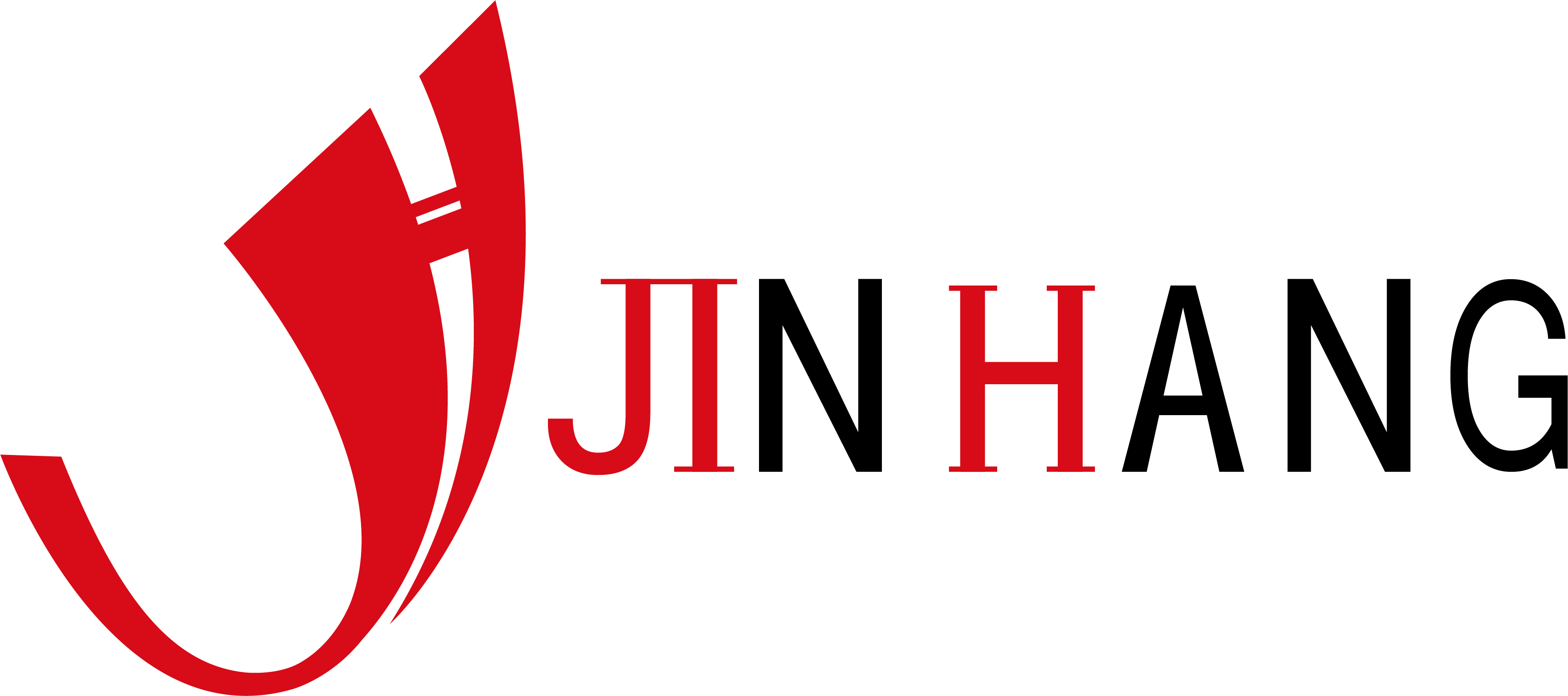What are the rubber rollers used in the papermaking industry?
The papermaking industry is a complex manufacturing process involving multiple links and the coordinated work of many mechanical equipment. In the entire papermaking process, rubber rollers are one of the indispensable key components. Rubber rollers are used in multiple links such as paper transportation, pressurization, coating, and calendering to ensure that the paper can be processed evenly and achieve the ideal physical and visual effects. Rubber rollers can not only adapt to different paper production needs, but also effectively extend the service life of equipment and improve production efficiency.
This article will introduce in detail the various types of rubber rollers used in the papermaking industry, explore their different uses and their key roles in each link.

What is the role of rubber rollers?
Rubber rollers play a variety of functions in the papermaking industry, from pulp processing to finished paper calendering, and every step depends on the performance of rubber rollers. They usually achieve their functions by interacting with other rollers or equipment, including compression, conveying, guiding, coating, stratification, etc.
In the papermaking process, rubber rollers mainly undertake the following important tasks:
1. Paper transmission: During the entire production process, paper or pulp needs to be transferred from one link to another, and rubber rollers complete this task through their flexibility and friction.
2. Pressing and flattening: In papermaking, pulp needs to be flattened, dehydrated and shaped by high pressure. The rubber roller provides uniform pressure to make the paper structure tight and finally produce smooth and uniform paper.
3. Coating: Some papers need to be coated with a layer of special materials on the surface during the production process to enhance their performance, such as waterproofing, oil resistance or improving surface gloss. Rubber rollers play the role of transmitting and applying coatings during the coating process.
4. Calendering: The surface finish and texture of paper are one of the key requirements of the final product. Rubber rollers can calender the surface of paper to make it smoother and flatter by cooperating with steel rollers or other hard rollers.
Based on these key roles, there are many types of rubber rollers in the papermaking industry, and each type of rubber roller is specially designed for different production links and process requirements.

What are the types of rubber rollers commonly used in the papermaking industry?
Press Roll
The press roll is the most common type of rubber roller in the papermaking industry, mainly used for pulp dehydration and flattening. The press roll is usually located in the press section of the papermaking machine. By applying pressure, the water in the pulp is squeezed out to form a preliminary formed paper. This process not only increases the drying speed of the paper, but also enhances the strength and stability of the paper.
Press rolls are usually made of high-strength, wear-resistant rubber to ensure that they can maintain stable performance during long-term use. Common press roll rubber materials include:
● Nitrile rubber (NBR): Due to its excellent oil resistance and wear resistance, it is widely used in press rolls. It can maintain stable performance under higher pressure.
● Polyurethane (PU): It has extremely high wear resistance and mechanical strength, and is suitable for pressing processes under high pressure conditions.
Coating Roll
Coating rolls are used to apply specific coatings such as starch, latex, ink, etc. on the surface of paper. The coating roller evenly applies the coating on its surface to ensure that the surface of the paper is uniformly coated, thereby improving the physical properties of the paper or giving it some special functions.
The material of the coating roller needs to have good chemical corrosion resistance, because the coating used in the coating process usually has certain acidity, alkalinity or other chemically active substances. Therefore, common coating roller rubber materials include:
● Chloroprene (CR): Chloroprene has good chemical corrosion resistance and aging resistance, and can effectively resist the erosion of chemicals during the coating process.
● Silicone Rubber: Silicone rubber is widely used in coating rollers due to its high temperature resistance, corrosion resistance and anti-stickiness, especially in high-temperature coating processes.
Guide Roll
The guide roller is used to guide the paper through various links of the papermaking machine to ensure that the paper moves smoothly during the production process. The guide roller is usually installed at multiple locations in the papermaking machine, and through cooperation with other transmission equipment, it ensures that the paper will not deviate or pleat.
The guide roller is usually made of a rubber material with high flexibility so that it can always maintain good control of the paper at different speeds and pressures. Commonly used paper guide roller rubber materials are:
● Natural rubber (NR): Natural rubber has become one of the common materials for paper guide rollers due to its excellent elasticity and flexibility, which can effectively reduce paper damage.
● Ethylene propylene rubber (EPDM): Ethylene propylene rubber has good weather resistance and corrosion resistance, and is suitable for use in long-term paper guide systems.
Cleaning Roll
In the papermaking process, the cleaning roll is used to keep the surface of the paper machine clean to prevent pulp or other impurities from accumulating on the roller and affecting production. The cleaning roll uses its surface material to remove contaminants from the paper machine through rotational motion, thereby ensuring the normal operation of the equipment.
The rubber material of the cleaning roll is usually required to have a certain degree of wear resistance and corrosion resistance, and be able to withstand high-frequency cleaning operations. Common cleaning roll rubber materials include:
● Nitrile rubber (NBR): Nitrile rubber has excellent wear resistance and chemical corrosion resistance, and can cope with chemical reagents that may be encountered during the cleaning process.
● Polyurethane (PU): Polyurethane has extremely high mechanical strength and is suitable for use in high-intensity cleaning tasks.
Calender Roll
The calender roll is another key type of rubber roll in the papermaking process, mainly used for the final calendering of paper. Through the cooperation of the calender roll and the hard roll, the surface of the paper can be evenly flattened to obtain a smoother texture and higher gloss. This process plays a vital role in the final quality of the paper.
The rubber material of the calender roll needs to have good wear resistance and pressure resistance, and can maintain stable physical properties at high temperatures. Commonly used rubber materials for calender rolls are:
● Chloroprene rubber (CR): Due to its excellent high temperature resistance and aging resistance, chloroprene rubber is widely used in calender rolls.
● Silicone rubber: Silicone rubber is resistant to high temperatures and has good elasticity, which is suitable for calendering processes under high temperature conditions.
Adhesive Roll
The adhesive roll is used to evenly apply the adhesive on the surface of the paper to make it bond between different layers to form composite paper or laminated paper. The adhesive roll needs to have excellent chemical resistance and anti-stickiness to prevent the adhesive from adhering to the roller surface and affecting normal operation.
The materials for adhesive rollers are usually selected as follows:
● Silicone Rubber: Due to its excellent anti-adhesive properties and high temperature resistance, silicone rubber has become a common material for adhesive rollers.
● Fluororubber (FKM): Fluororubber has excellent chemical corrosion resistance and can maintain stable performance in harsh adhesive environments.

How to choose the right rubber roller material?
In the papermaking industry, different production links have different requirements for rubber rollers, so choosing the right rubber material is crucial. The following are some key factors to consider when choosing rubber roller materials:
1. Wear resistance: During the production process, rubber rollers frequently contact paper and other mechanical parts, and wear resistance is the primary consideration for rubber roller materials.
2. Chemical resistance: In processes such as coating and cleaning, rubber rollers may come into contact with various chemical reagents, so the chemical corrosion resistance of the material is also an important indicator.
3. Temperature resistance: Some links such as calendering and coating require higher temperatures, so it is particularly important to choose rubber materials that can withstand high temperatures.
4. Elasticity and flexibility: Rubber rollers need to have good elasticity and flexibility to ensure that they can work effectively with other rollers during the production process and ensure the quality of the paper surface.
JH Machinery has been providing premium industrial rolls to global buyers for over 20 years. Established in 2001, we operate a 13,000-square-meter factory equipped with advanced technology and certified to ISO9001 standards. Our product range includes mirror rolls, chrome-plated rolls, and polyurethane rolls, all customizable to meet your specific needs. Whether you need wholesale solutions or competitive pricing, JH Machinery is your trusted supplier in China. Contact us today for inquiries and quotes.
